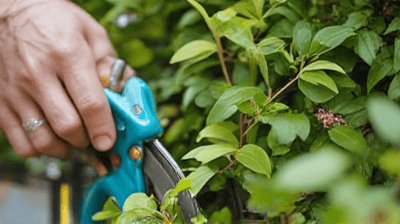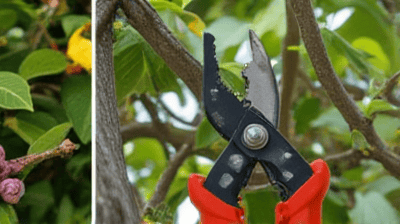Pruning is an essential practice for maintaining the health and vitality of your plants, whether they are trees, shrubs, flowers, or vegetables. Proper pruning not only promotes growth but also enhances the aesthetic appeal of your garden.

Understanding the Importance of Pruning
1. Promotes Healthy Growth
One of the primary reasons for pruning is to promote healthy growth. Regular pruning helps remove dead, damaged, or diseased branches, allowing the plant to redirect its energy toward producing new growth. This leads to a denser, more vibrant plant.
2. Improves Air Circulation and Sunlight Exposure
Pruning helps improve air circulation and sunlight exposure throughout the plant. Both are crucial for photosynthesis and preventing the development of mold and disease. Well-pruned plants are less likely to suffer from fungal infections and pest infestations.
3. Shapes Plants
Pruning is an effective way to shape plants and control their size. This is particularly important for ornamental plants and hedges, where maintaining a specific form is desirable. Regular pruning can help prevent overgrowth and maintain the intended shape.
4. Encourages Flowering and Fruiting
Many flowering and fruit-bearing plants benefit from pruning. By removing old flowers or spent fruit, you encourage the plant to produce new blooms or fruits. This can lead to a more abundant harvest in the case of fruit trees and a longer flowering season for ornamental plants.
5. Enhances Landscape Aesthetics
Pruning not only helps plants grow better but also enhances the overall appearance of your garden. Neatly trimmed plants and trees contribute to an organized and polished landscape, increasing your home's curb appeal.
Basic Pruning Techniques
Before you grab your pruning shears, it’s essential to understand the fundamental techniques involved in pruning. Here are a few key methods you will encounter:
1. Thinning
Thinning involves selectively removing entire branches to reduce dense growth. This method improves air circulation and light penetration, which benefits the overall health of the plant.
2. Heading Back
Heading back, or topping, is the practice of cutting back stems to a certain point. This technique encourages bushier growth and is often used on shrubs and trees to maintain their desired size.
3. Renewal Pruning
Renewal pruning involves removing old, less productive wood to stimulate new growth. This technique is commonly used on older shrubs to revitalize them and promote fresh, healthy branches.
4. Shearing
Shearing is a technique used primarily for hedges and topiary. It involves cutting back branches evenly to create a specific shape or size. This method should be done carefully to maintain the health and vitality of the plant.
5. Pinching
Pinching is the practice of removing the tips of young shoots with your fingers or small snips. This encourages lateral growth and helps create a fuller appearance in annuals and perennials.
Essential Tools for Pruning
Having the right tools is crucial for effective pruning. Here are some essential tools you should consider:
1. Pruning Shears
Pruning shears, or hand pruners, are used for cutting small branches and stems up to one inch in diameter. They come in two main types: bypass and anvil. Bypass pruners have two curved blades that glide past each other, while anvil pruners have a single straight blade that cuts against a flat surface. Bypass pruners are generally preferred for their clean cuts.
2. Loppers
Loppers are long-handled cutting tools designed for cutting thicker branches, typically up to two inches in diameter. They provide more leverage and reach than standard pruning shears, making them ideal for taller plants and hard-to-reach areas.
3. Pruning Saws
For larger branches, a pruning saw is necessary. These saws are designed specifically for cutting wood and come in various sizes. Choose a handsaw for small jobs or a pole saw for higher branches.
4. Hedge Trimmers
Hedge trimmers are used for shaping hedges and larger shrubs. These can be manual or powered, depending on the size of the hedge and the amount of trimming needed.
5. Safety Gear
Safety should always be a priority when pruning. Wear gloves to protect your hands, safety glasses to shield your eyes from debris, and long sleeves to guard against scratches.

When to Prune Your Plants
The timing of your pruning efforts is essential for optimal results. Different plants have specific pruning needs based on their growing seasons:
Early Spring Pruning
Many plants benefit from early spring pruning before they start to bud. This is an excellent time to prune deciduous trees, shrubs, and perennials that bloom later in the season.
Summer Pruning
Summer pruning can help manage the size and shape of plants while also removing any dead or diseased branches. This is particularly useful for fruit trees, which may be pruned immediately after harvesting.
Late Winter Pruning
Late winter or early spring is often the best time to prune fruit trees while they are still dormant. This helps reduce the stress on the tree and encourages healthier growth in the spring.
Specific Pruning Times for Popular Plants
- Roses: Prune in late winter or early spring before new growth begins.
- Lilacs: Prune after flowering to avoid cutting off next year's blooms.
- Ornamental Grasses: Cut back in early spring before new growth appears.
- Crape Myrtles: Prune in late winter to spring to promote vigorous growth.
How to Prune Specific Types of Plants
Understanding how to prune different types of plants is crucial for maintaining their health. Here are guidelines for some popular plant types:
1. Fruit Trees
Fruit trees require specific pruning techniques to encourage vigorous growth and a bountiful harvest.
- Remove Dead or Diseased Branches: Start by removing any dead, damaged, or diseased branches to improve air circulation.
- Shape the Tree: Aim for an open center design to allow sunlight and air to penetrate the tree. Remove any vertical growth (suckers) and inward-growing branches.
- Prune for Size: Reduce the height and spread of the tree by cutting back larger branches to maintain size without sacrificing fruit production.
2. Shrubs
Pruning shrubs promotes healthy growth and flowering.
- Evaluate Growth: Assess the shrub's growth habit and overall shape. Remove any old, woody branches to encourage new growth.
- Remove Spent Flowers: Removing faded blooms stimulates additional flowering.
- Control Size: If the shrub is overgrown, use thinning cuts to shape it while maintaining its natural form.
3. Perennials
Perennial plants benefit from careful pruning to enhance their growth and flowering.
- Cut Back Inactive Plants: After the growing season, prune back dead foliage to encourage new growth in spring.
- Divide Larger Clumps: For crowded perennials, consider dividing the plant every few years to rejuvenate growth and increase flowering.
4. Roses
Roses require special attention to ensure vigorous blooms.
- Prune in Late Winter: Cut back to just above a healthy outward-facing bud. Remove weak or thin branches to encourage stronger growth.
- Remove Old Growth: Eliminate any dead or diseased wood, and thin out crowded stems to enhance air circulation.
- Shape: Aim for an open center to improve airflow and light penetration.
5. Ornamental Trees
Pruning ornamental trees enhances their beauty and health.
- Limit Size: Focus on removing lower branches and shaping the top for an elegant form.
- Cut Back Crowded Branches: Selectively remove branches that cross or compete for space to encourage clear structure.
- Maintain Health: Regularly monitor for dead or diseased branches and remove them promptly.
Common Pruning Mistakes
Avoiding common pruning mistakes can lead to better results and healthier plants. Here are a few pitfalls to watch out for:
1. Pruning at the Wrong Time
Timing is critical when it comes to pruning. Pruning at the wrong time can lead to reduced flowering or fruiting. Follow recommended pruning times for each plant species.
2. Using Dull Tools
Dull tools can crush and damage plant tissue, leading to infection. Always use sharp tools for clean cuts, which promote quicker healing.
3. Over-Pruning
Removing too much foliage can stress the plant and hinder its growth. Aim to prune selectively to maintain the plant's overall health.
4. Neglecting Safety
Safety should always come first. Failing to wear protective gear can lead to injuries while pruning.
5. Not Cleaning Tools
Cleaning your pruning tools after use helps prevent the spread of disease between plants. Use a solution of water and bleach or rubbing alcohol to disinfect tools before moving on to the next plant.
Conclusion
Pruning is a crucial aspect of plant care that promotes health, vitality, and aesthetic appeal. By understanding the importance of pruning, mastering basic techniques, and knowing when and how to prune specific plants, you can create a thriving garden. Regular pruning helps improve air circulation, encourages new growth, and enhances the overall beauty of your landscape.
As you embark on your pruning journey, remember to equip yourself with the right tools, observe proper techniques, and avoid common mistakes. With practice, you'll soon develop the skills needed to keep your plants healthy and flourishing.



